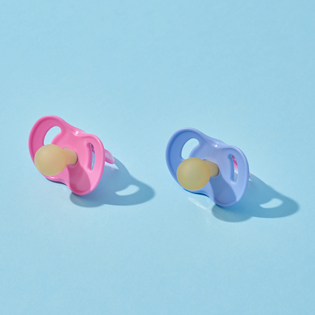Does your newborn look more like an alien than a baby? Most babies aren’t born perfectly photogenic — especially if they’re delivered vaginally.
And one of the most common quirks about the appearance of many babies is a cone-shaped head. Here’s what you need to know about your conehead baby.
What is a conehead baby?
A conehead baby is a newborn with a head that’s pointy (or, as the name suggests, cone-shaped) after making his way through the vagina at birth.
Why does my baby have a conehead after my vaginal birth?
Babies tend to have a conehead after a vaginal birth because they have made a very tight squeeze through the bones of the pelvis and the birth canal.
Measure out 10 centimeters (or 4 inches) on a ruler: That’s approximately the diameter of your cervix at the last stages of labor. Meanwhile, a newborn’s head is particularly large — on average about 13.8 inches in circumference and one quarter of his total length! That makes for a tight fit.
Fortunately, your baby’s head also adjusts to his exit. Here’s how:
- The bones in a newborn’s skull aren’t fully formed.
- Every baby’s skull is made up of bony plates, with two large soft spots that allow it to shape-shift.
- As a baby descends through the cervix and vagina, his skull compresses and sometimes overlaps to fit the space — a process known as molding.
- These shifts allow babies to be born vaginally, but they can also result in a cone-shaped head upon arrival. Scalp swelling resulting from pressure on the head during labor can also contribute to a misshapen appearance.
- Babies who drop early or who endure longer labors and narrow birth canals are more likely to have cone-shaped heads.
Is there something wrong with my conehead baby?
There’s absolutely nothing wrong with a conehead shape in newborn babies, and it doesn’t mean that your baby will have pain or developmental delays. In fact, a conehead is one of the most obvious signs that a baby was born vaginally.
Read This Next
C-section babies, who didn’t have to make the same squeeze, tend to have perfectly round heads from the start. Since about 1 in 3 babies in the US are delivered by C-section, it’s no wonder that many other newborns you see don’t have a conehead.
How long will my baby have a cone-shaped head?
A baby may have a cone-shaped head for a few days to a couple of weeks before his skill takes on a typical rounded shape.
Will my conehead baby also have flat head syndrome?
Your baby’s head will return to its normal roundness on its own within a few days to a few weeks. After birth, however, pressure on the back of the head can affect head shape. Babies who tend to rest in the same position can continue to have an uneven head shape well after birth, a condition known as positional plagiocephaly, or flat head syndrome.
Is there anything I can do about my baby’s conehead?
Your baby’s cone-shaped head will become less lopsided within a couple of weeks, so try to let it go and enjoy these first moments with your baby.
If your baby is a couple of weeks old and you’re concerned that his conehead is related to positioning, try these tricks:
- Always place your baby on his back to sleep — but alternate the direction your baby's head faces. Or place your baby's head at the foot of the crib one day and the head of the crib the next.
- Relieve pressure on the back of your baby’s head from carriers, swings and baby seats by holding him as often as you comfortably can when he’s awake.
- Give your baby supervised tummy time on a firm surface for several minutes several times a day. This helps strengthen his back and neck muscles so he’ll have more control over his head, which helps your baby keep the pressure on his skull more evenly distributed.
When to call the doctor about your conehead baby
If you notice that your baby appears to be developing flat head syndrome or you are at all concerned about your baby’s conehead, don’t hesitate to check in with your doctor. He or she will:
- Offer tips to help round out your baby’s head. In severe cases, your pediatrician may recommend a special helmet designed to round out your baby’s head.
- Check for signs of congenital torticollis, or limited neck mobility that can cause a baby’s head to tip to one side and result in an asymmetrical head shape over time. Your pediatrician may recommend visiting a physical therapist for stretching and strengthening exercises that free up baby’s head movement.
- Rule out craniosynostosis, a rare genetic defect that causes the plates on a baby's skull to fuse prematurely and may rarely require surgery.
A cone-shaped head is simply a sign of vaginal birth, so try not to let your newborn’s head shape bug you too much. In the vast majority of cases, your baby’s conehead should round out in no time.











































 Trending On What to Expect
Trending On What to Expect





